Titmice
by Walt Anderson
Let’s face it. Most humans do not value all species equally, as honorable as that might be. We’re suckers for the cute and cuddly, critters that are boldly patterned or brightly colorful, big-eyed and not too bizarre by human standards. Giant Pandas fit those criteria, as do the charming little titmice that are the subjects of today’s photo essay. But even if we are naturally drawn to these confiding and bold little sprites, we should go beyond mere appearances and get to know them a bit more.
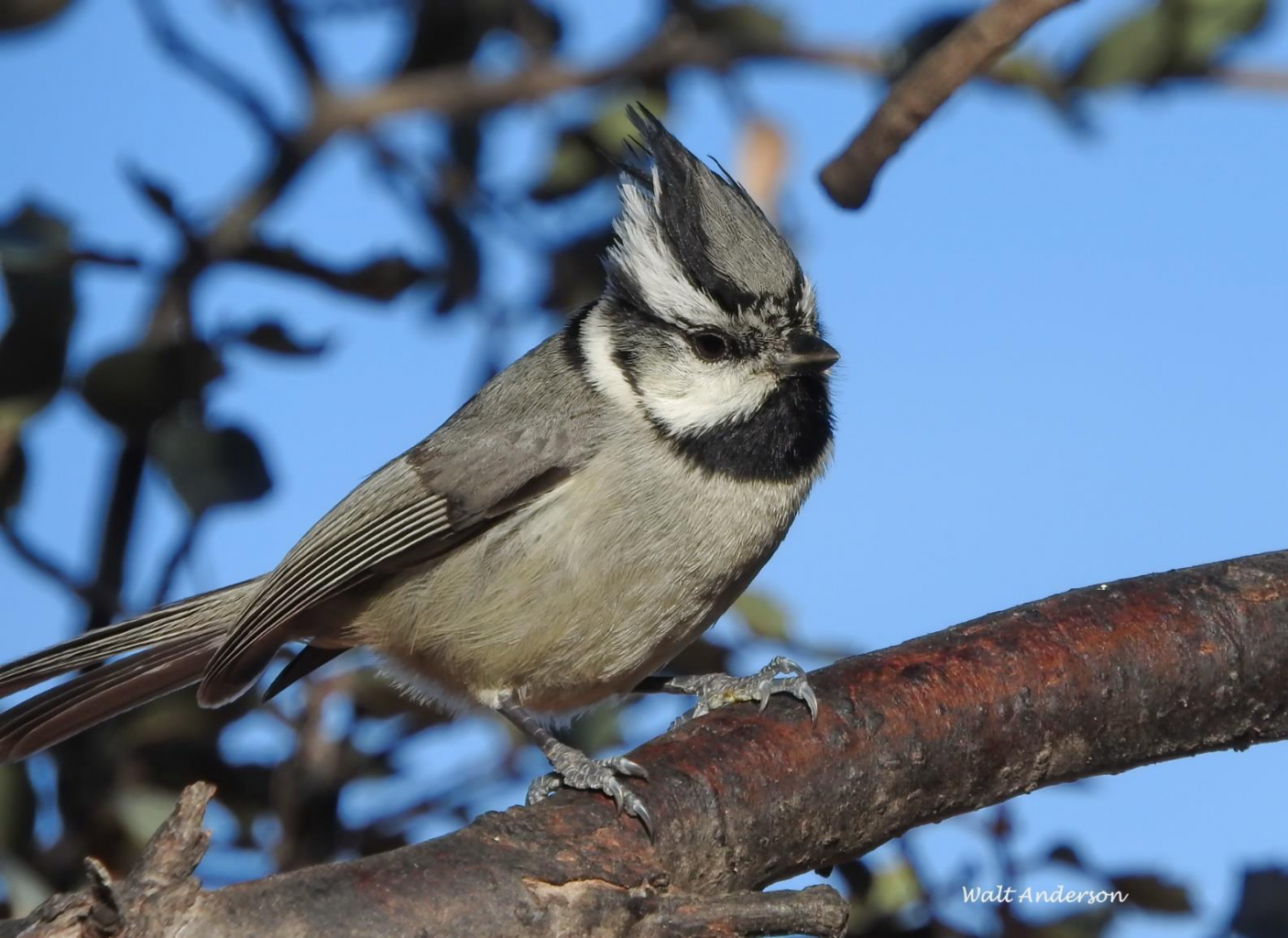
The Bridled Titmouse resembles a crested chickadee. Indeed, it is the only titmouse with such a dramatic facial pattern and black bib. Titmice use their crests in visual interactions more than do their chickadee relatives, which tend to emphasize vocalizations.

The Bridled Titmouse is essentially a Sierra Madre species that extended its range up into central Arizona only in the last 4000 – 8000 years. It prefers evergreen oak woodlands, tall riparian groves, and pine-oak stands with Alligator Junipers. Here you can see the kind of mix that they prefer. In Arizona, they reach as far north as Juniper Mesa and upper Oak Creek Canyon and continue down through the Sky Islands of SE Arizona and as far west as the Baboquivaris.
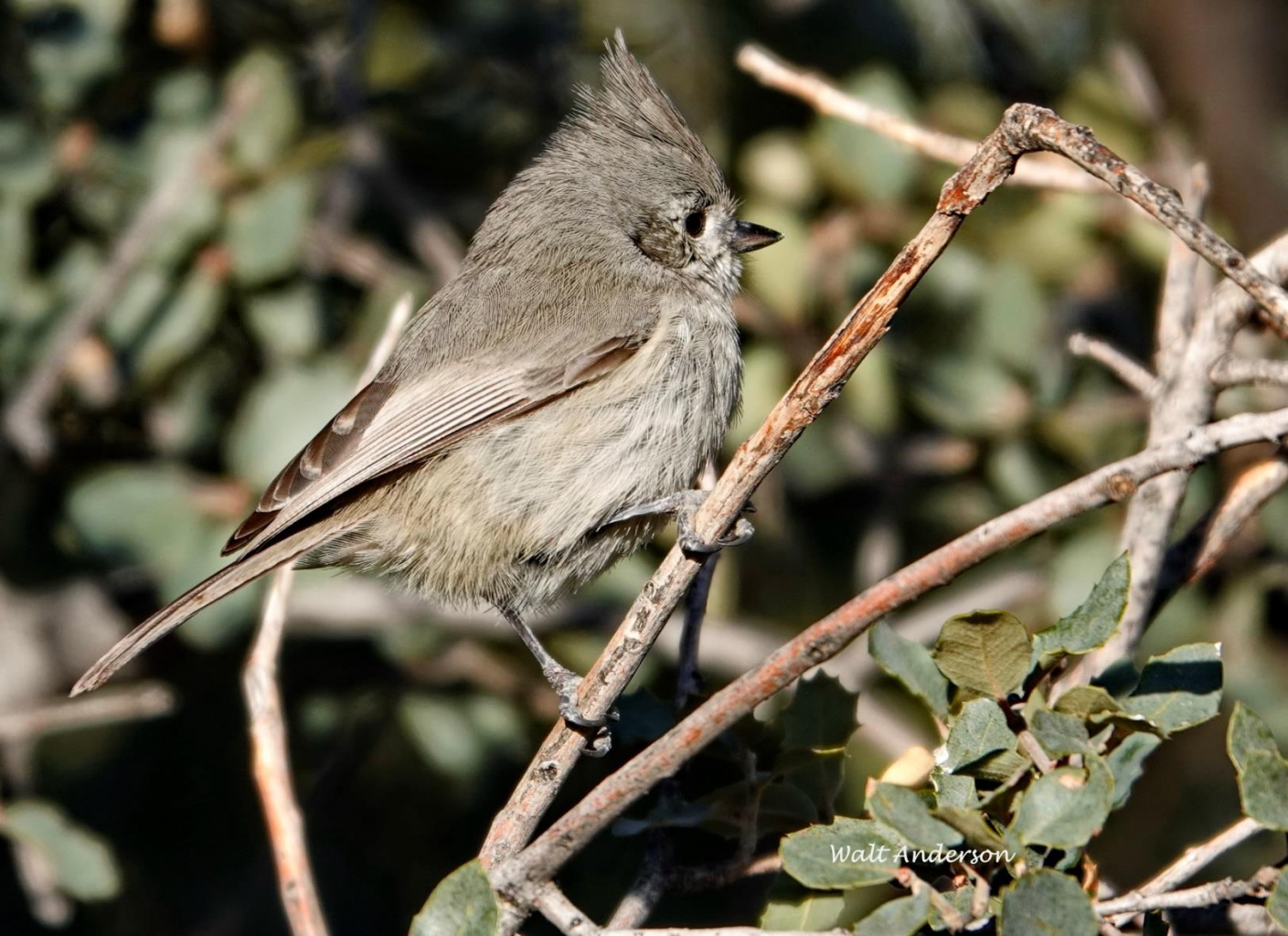
The Juniper Titmouse is not as flashy as the Bridled. In fact, until fairly recently, it was called the Plain Titmouse. Various studies showed that those “plain” birds in California, SW Oregon, and NW Baja were different enough genetically and vocally from the ones in Arizona, so the Plain Titmouse went administratively extinct, replaced by the coastal Oak Titmouse and the inland Juniper Titmouse. Surprisingly little is known about the natural history of this species, even though it currently has a large range in the intermountain West. Here is an invitation for up-and-coming ornithologists to study an easily observable and wonderfully cute bird.

The Juniper Titmouse typically has Utah or Oneseed Juniper in its habitat, though it lives where junipers are scattered in mid-elevation grasslands up through chaparral and to the edges of pine forest. It is larger and more heat-tolerant than the Bridled. You might expect that the physiological adaptations to aridity of the Juniper Titmouse might give it an edge as climate changes, but if we get wholesale die-off of junipers, as is happening in some places, then this poor species could be toast.
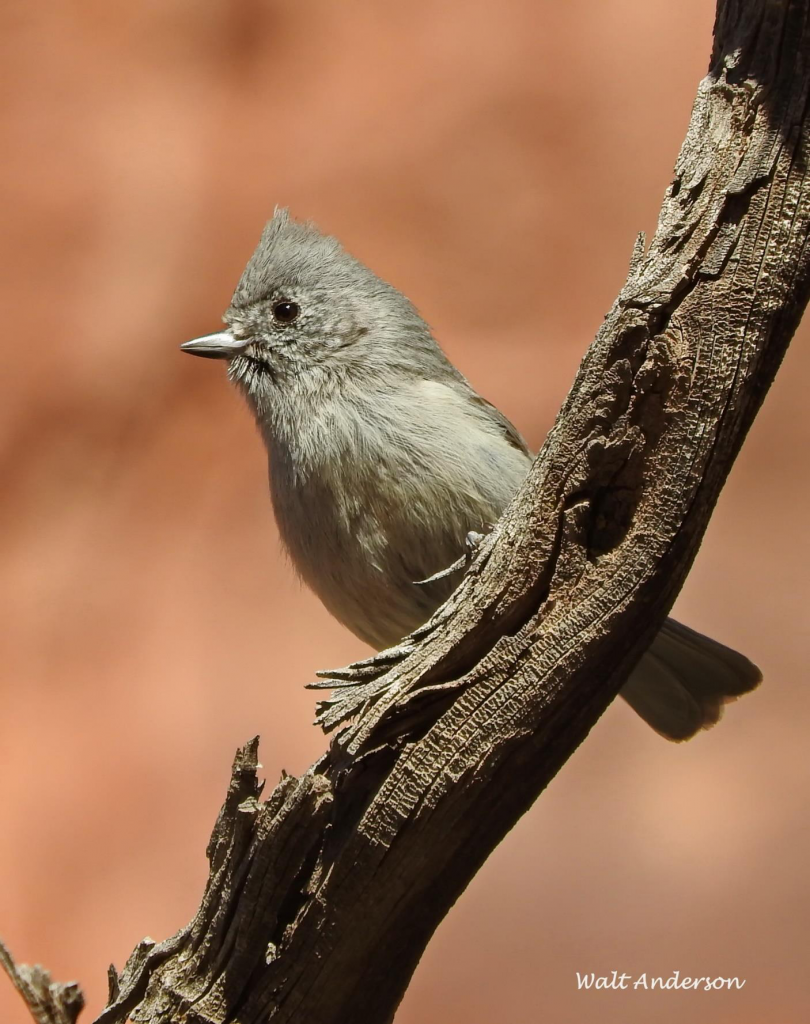
Titmice have blunt, thick bills and are omnivores, feeding on many kinds of insects and spiders during the summer and switching more to fruits and nuts in the winter. They can hold acorns, pinyon nuts, or oak galls in their strong feet and hammer at them to get the contents. The Juniper Titmouse sometimes hoards food in cashes that it can return to for later retrieval.

The Bridled Titmouse rarely caches food and thus has a smaller hippocampus, the brain area where spatial memory is concentrated.
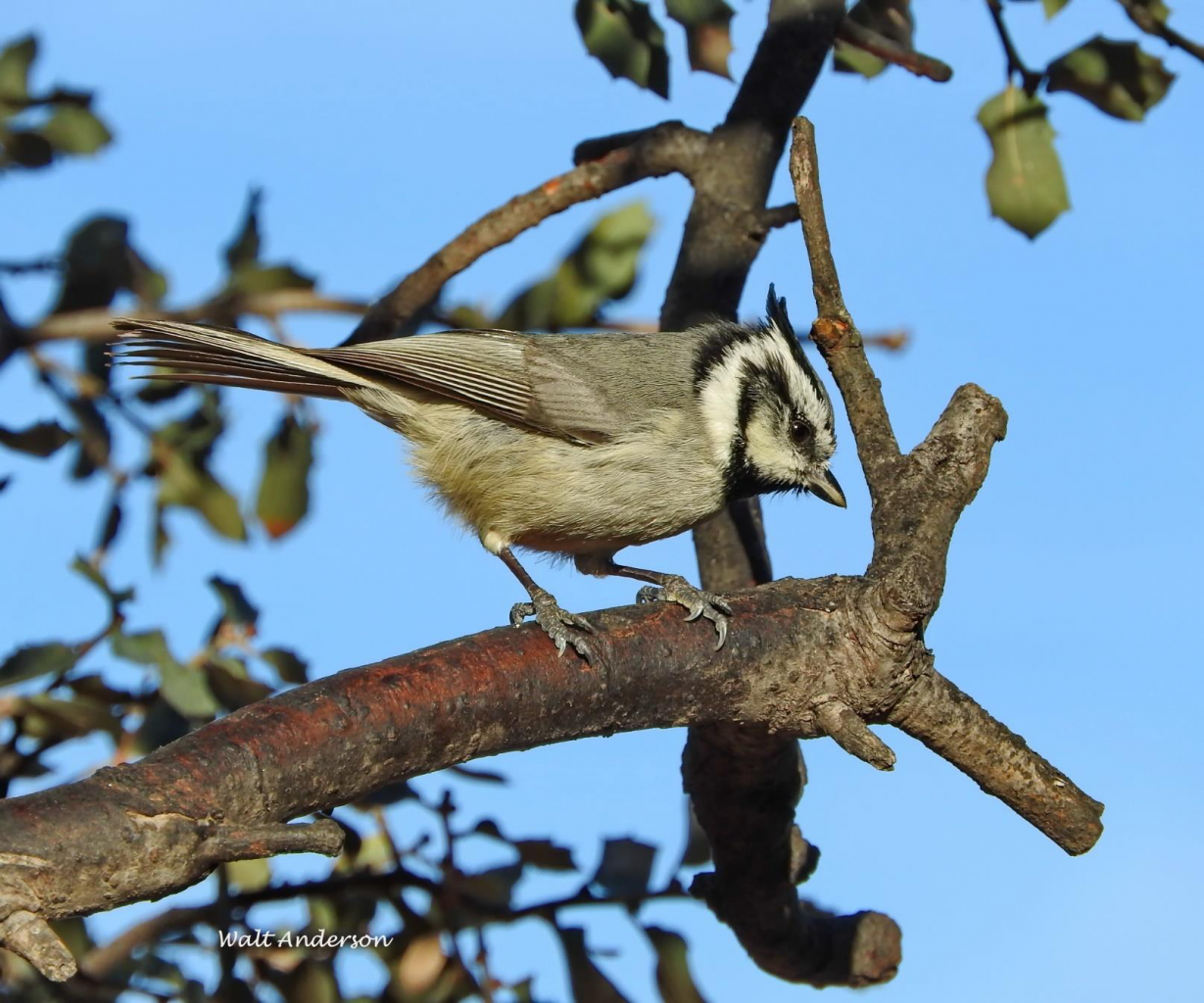
The Bridled Titmouse is much more sociable than the Juniper. Territorial during the nesting season, it readily joins other species (e.g., wrens, warblers, vireos, kinglets, bushtits) during the winter in mixedspecies foraging flocks, where its chittering and alertness make it the nuclear species that others gather around. Titmice also aggressively mob predators (owls, hawks, jays, cats, snakes) when they see them, scolding them vociferously and sometimes even striking them from behind with aerial attacks. Recently I was walking in a riparian area when I heard titmice scolding and saw some Lucy’s Warblers behaving strangely. I knew this signified the presence of a predator, so I stalked the sounds and found a Great Horned Owl fledgling on the ground, surrounded by troubled little songbirds. It pays to tune in to and understand the meaningful conversations in nature!
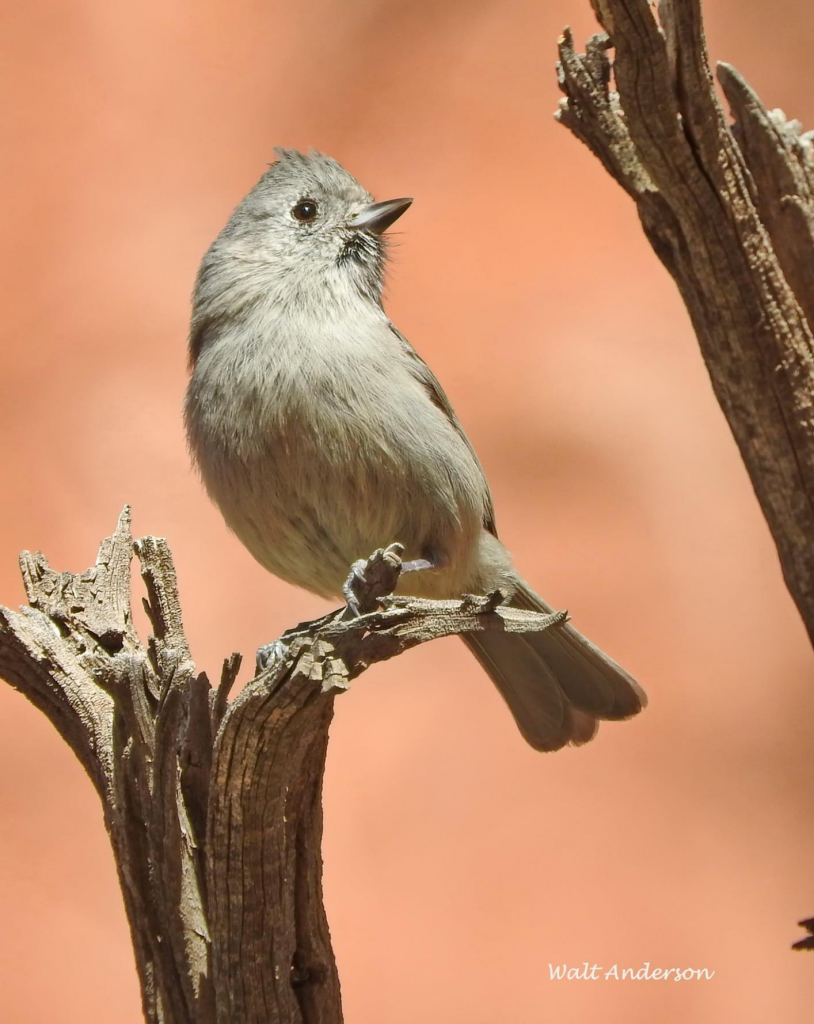
Titmice are cavity nesters. The female builds a soft cup nest inside the hole and is fed by the male while she incubates. They are monogamous, forming long-term pair bonds. Like chickadees, they are attracted to sunflower seeds and suet put out by bird lovers, and their tameness and general adorableness make them a favorite at the feeders.
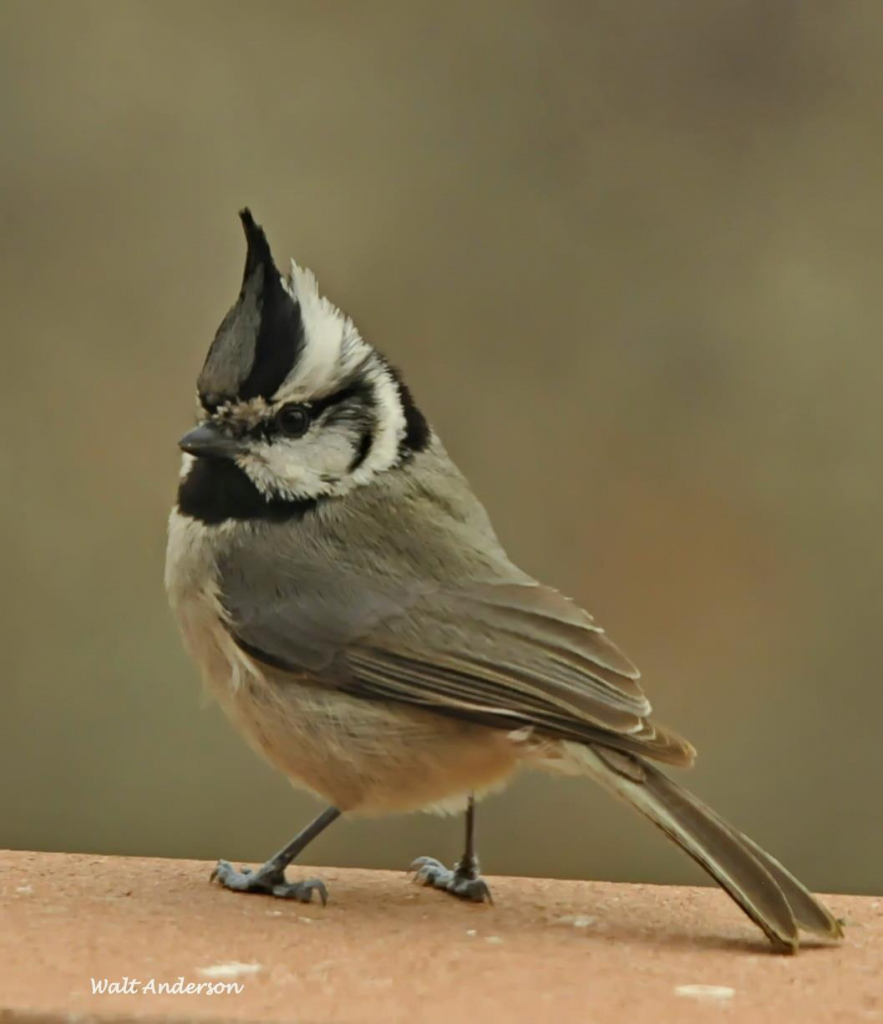
I have to say that when it comes to these titmice, I have unbridled enthusiasm!
